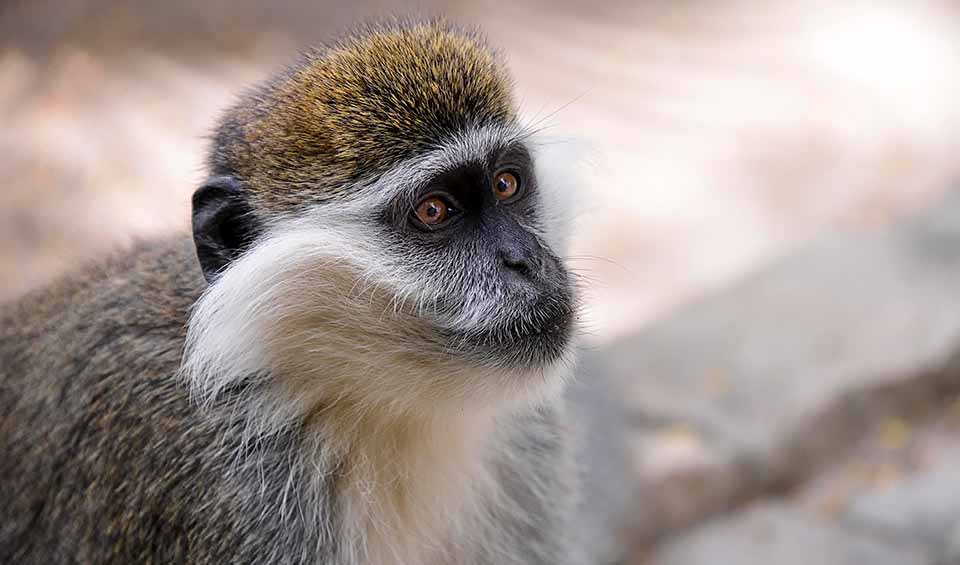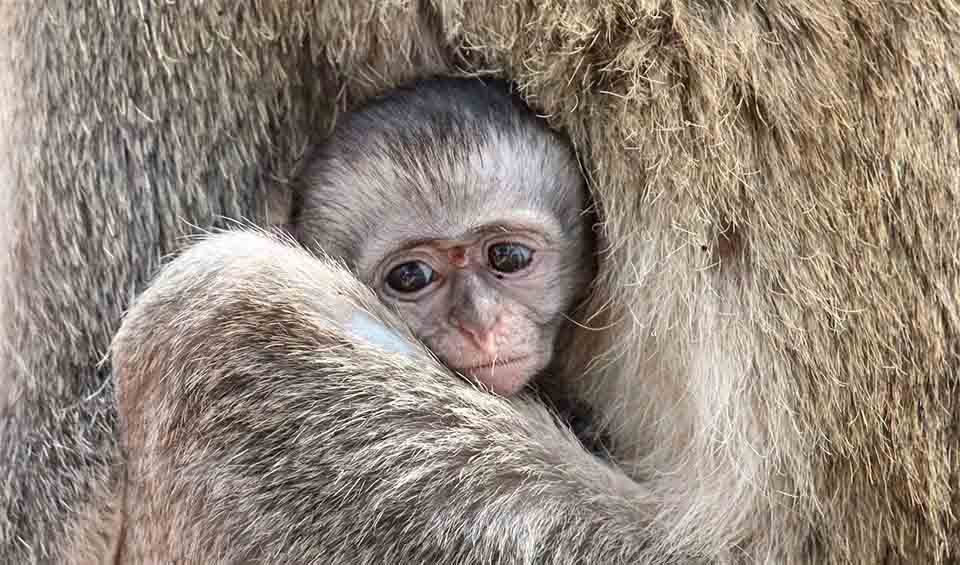Chlorocebus – Vervet monkeys
Famous for their ability to vocal signaling
The genus Chlorocebus encompasses seven distinct species of semi-arboreal African monkeys, commonly known as vervet monkeys or savanna monkeys. These primates are widely distributed across sub-Saharan Africa, ranging from the savannas of South Africa to the dry deciduous woodlands of Egypt. Their adaptable nature allows them to thrive in a variety of habitats, from open grasslands to urban environments.
Vervet monkeys are renowned for their quadrupedal locomotion, with a preference for terrestrial movement over tree-dwelling behavior. While they are primarily ground-dwelling, they are also proficient climbers and may take refuge in trees to escape predators or forage for food. Their ability to navigate both terrestrial and arboreal environments contributes to their success in diverse habitats.
One distinguishing feature of vervet monkeys is their omnivorous diet, which includes a wide range of foods such as mushrooms, small animals, plants, insects, and other invertebrates. Foraging in groups is a common behavior among vervet monkeys, allowing them to efficiently locate and exploit food resources while providing social benefits such as protection from predators and opportunities for social bonding.
Despite their adaptive capabilities, vervet monkeys face numerous threats from predators in their natural environment. Pythons, birds of prey, and leopards are among the formidable predators that prey on vervet monkeys, posing a constant risk to their survival. Additionally, human activities, including habitat destruction, poaching, and conflicts with humans, further threaten vervet monkey populations across Africa.
Species in this genus
Green monkey
Covered in thick golden fur with a touch of green, which is how they get their common name
Grivet
They live in big, noisy troops full of gossip, grooming, and monkey politics
Vervet monkey
Used for studying genetic and social behaviors of humans as they have human-like characteristics such as anxiety, hypertension, and social and dependent alcohol use




